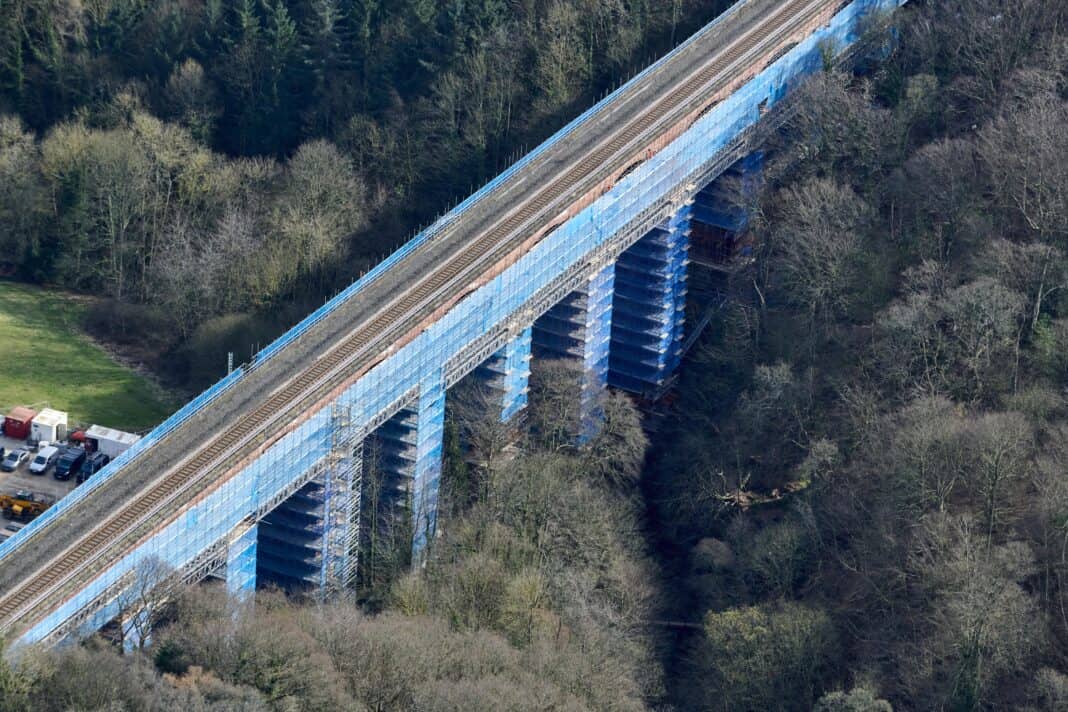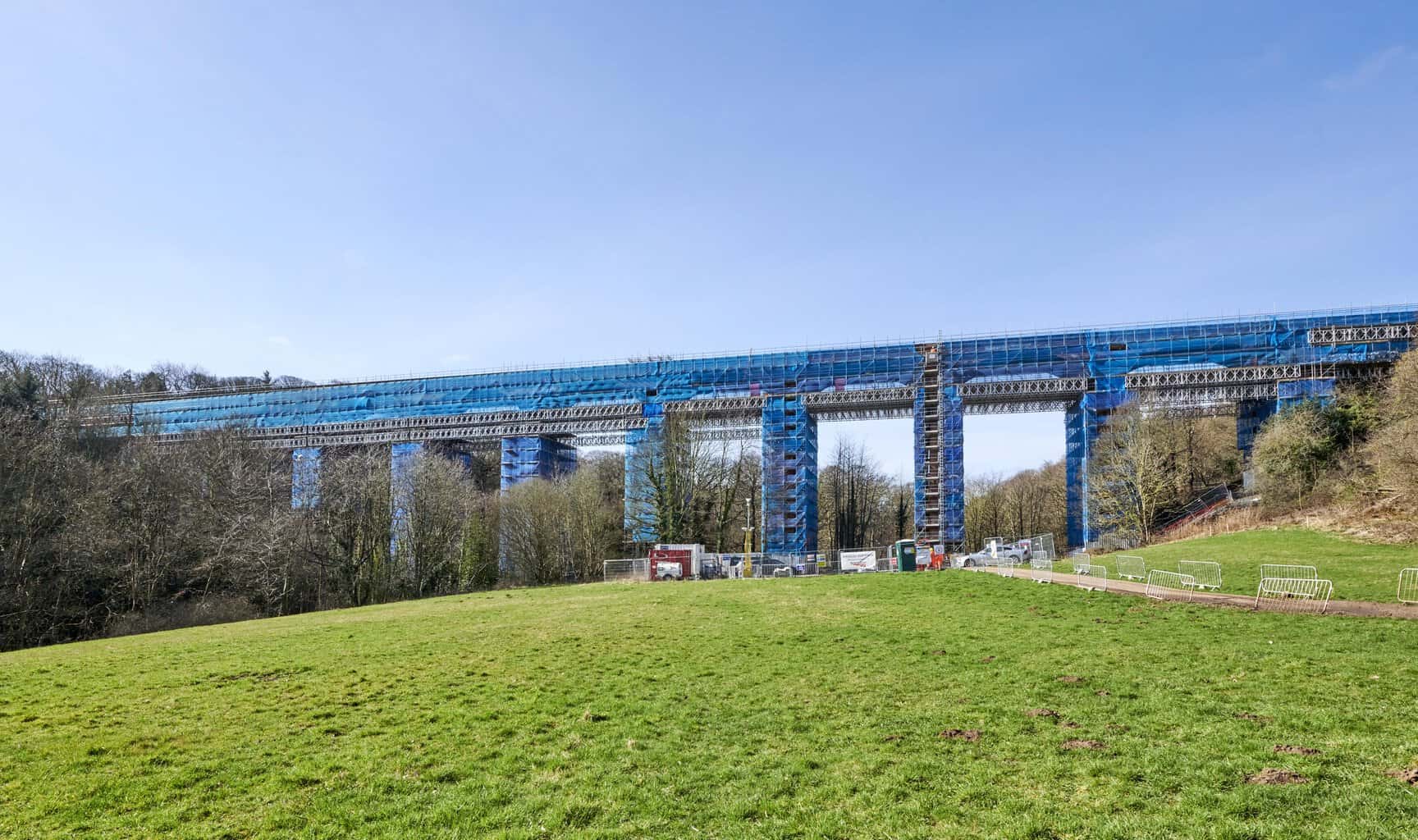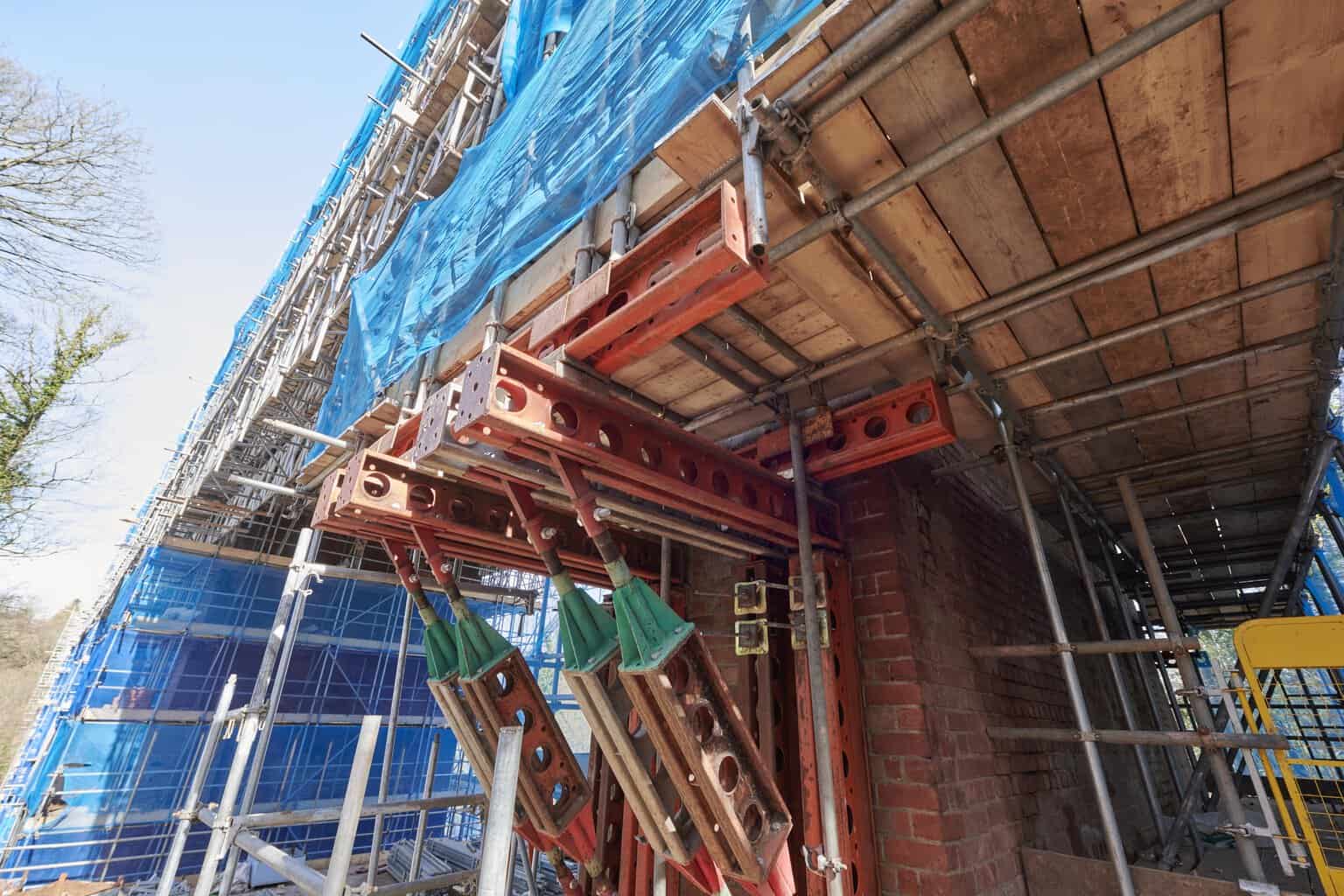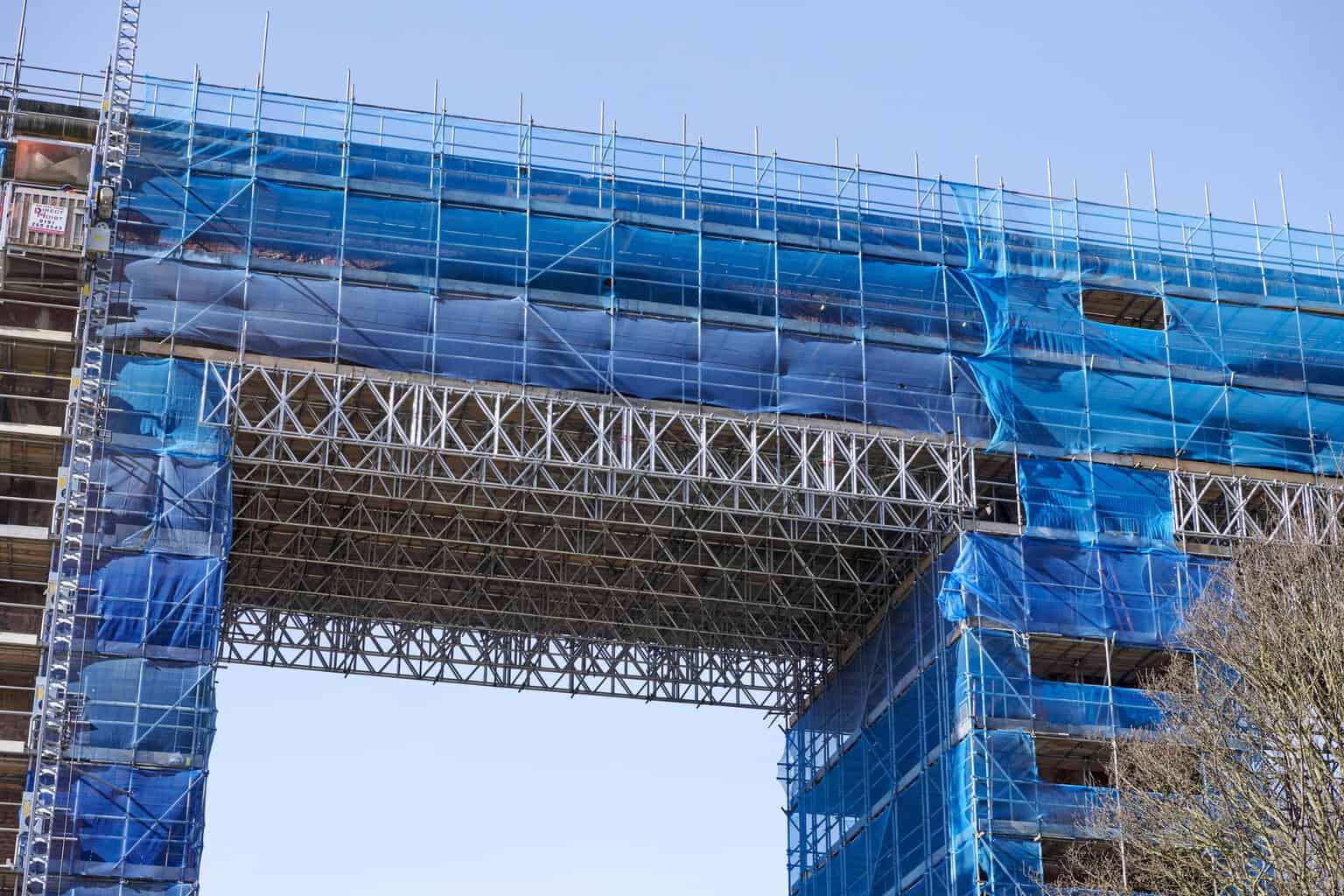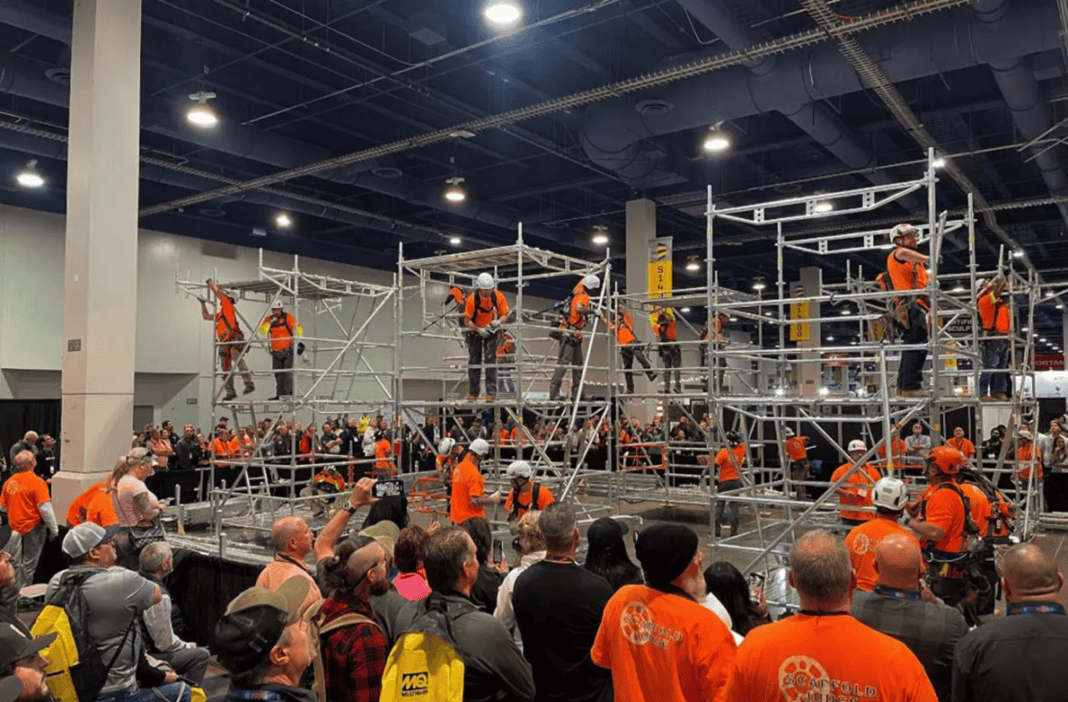The Saltburn Viaduct stands as a testament to Victorian engineering, towering over Skelton Beck and Mill Fields since its completion in the late 19th century. Originally built between 1865 and 1872 by the North-Eastern Railway Company, the viaduct served as a vital transportation route for the burgeoning industrial activities in the region, notably the Skinningrove Limestone Mine.
Now, nearly 150 years later, this towering structure—spanning over 250 meters long and standing 40 meters high—has required meticulous attention and care to preserve its grandeur for future generations.
This recent refurbishment project, headed by AMCO Giffen, required an extensive scaffolding setup to access the viaduct’s 10 red brick piers and 11 arches. Crossway Scaffolding, a renowned name in the scaffolding industry, was tasked with designing and implementing the access scaffolds that would be critical to the restoration work.
The Scale of the Task
The sheer scale of this scaffolding project is awe-inspiring. Crossway’s solution included 720 meters of beams in just one span, with over 5,000 meters of 1.3-meter beams used throughout the entire job. The structure of the viaduct demanded 10 piers to be fully scaffolded, with each tower averaging 11 lifts in height. Additionally, the 11 arches were beamed across to provide 18 elevated platforms, each spanning 11 meters across. This intricate setup supported more than 1,000 tons of scaffolding material at its peak.
One of the standout challenges was access to the highest parts of the viaduct—up to 180 feet above ground—requiring a highly specialised and durable scaffolding system. The Van Theil Tube-lock system was chosen for its flexibility and efficiency, enabling work crews to access every nook and cranny of the structure, even the hardest-to-reach areas.
“The Saltburn Viaduct project challenged us in ways we didn’t anticipate, but through teamwork and innovative thinking, we were able to deliver a successful outcome,” says Anthony Lomas, Operations Director, Crossway Scaffolding.
Overcoming Unique Challenges
Given its remote location, the Saltburn Viaduct presented numerous logistical hurdles. The ground conditions around Skelton Beck were less than ideal, necessitating innovative approaches to stabilise the scaffolding structure. In several areas, traditional scaffolding foundations were simply not feasible. Crossway utilised specialist RMD equipment to bolt the scaffolding directly to the structure to overcome this, ensuring stability even in these challenging conditions.
Working at such heights also introduced significant safety risks. In response, Crossway implemented a mechanical lifting arm fitted with a stretcher, designed to safely lower any worker in case of an emergency. This extra layer of safety reflected the company’s commitment to prioritising worker well-being throughout the project.
The project’s timing added to the complexity—it was carried out during the COVID-19 pandemic. This meant enforcing strict health and safety protocols, such as enhanced personal protective equipment (PPE) and social distancing measures. Crossway arranged for additional vehicles to transport workers to and from the site to minimise the risks, ensuring adherence to social distancing rules.
Scott Grant, SSSTS Supervisor at Crossway Scaffolding, said, “From the ground conditions to working at height, every aspect of this job pushed us to our limits. But seeing the finished project makes it all worthwhile.”
Adapting on the Fly
Scaffolding projects of this scale often require adjustments as work progresses, and the Saltburn Viaduct project was no exception. Initially, only four piers were set to be scaffolded using RMDs. However, as the team dug deeper into the project, ground conditions necessitated expanding this approach to seven full piers.
One notable adaptation was using a CL 25 General Purpose Bracket to create platforms lower on the piers. This allowed the team to install RMD Gallows brackets more quickly and efficiently. These lightweight brackets were installed from an alloy tower in the water—a challenging task that highlighted the team’s ingenuity and technical prowess.
Collaboration and Coordination
No project of this magnitude can succeed without strong collaboration. Throughout the 12-month project, Crossway worked closely with AMCO Giffen, their design team, and several other key partners. Detailed designs for the scaffolding solutions were provided, while Direct Hoist contributed to the safe and efficient transportation of materials. SIMIAN RISK, an independent safety inspector, conducted frequent inspections to ensure compliance with all safety protocols and best practices.
A Triumph in Scaffolding
Despite the many challenges, the Saltburn Viaduct scaffolding project was a resounding success. The project was completed within its 12-month timeline, a remarkable feat considering the complexity and scale of the work. Crossway’s innovative solutions, such as the use of RMDs and the mechanical lifting arm, proved critical in overcoming the project’s unique hurdles.
The project has been recognised industry-wide, culminating in Crossway being awarded the prestigious NASC 2021 Project of the Year Award for their work on the Saltburn Viaduct. This accolade is a testament not only to the team’s technical capabilities but also to their commitment to safety, innovation, and excellence in scaffolding.
Lessons Learned
The Saltburn Viaduct project offered valuable insights into the importance of adaptability and innovation in scaffolding. The decision to pivot and use RMDs on additional piers was instrumental in maintaining the project’s timeline and safety. Additionally, the use of mechanical lifting equipment highlighted the importance of incorporating advanced safety features when working at height.
For Crossway, the project also underscored the need for solid logistical planning, particularly when working in remote locations or under challenging conditions. The company’s decision to provide local accommodation for its workers during the week improved morale and ensured that work continued without delays caused by long commutes.
Looking Forward
With the successful completion of the Saltburn Viaduct project, Crossway has once again proven itself as a leader in the scaffolding industry. The company’s innovative approaches and steadfast commitment to safety and quality will undoubtedly serve as a blueprint for future projects of this scale and complexity.
For now, the Saltburn Viaduct continues to stand tall—a lasting symbol of engineering brilliance, preserved for future generations thanks to the skill and dedication of Crossway Scaffolding.
This article was originally published in Issue 23 of the ScaffMag magazine.
